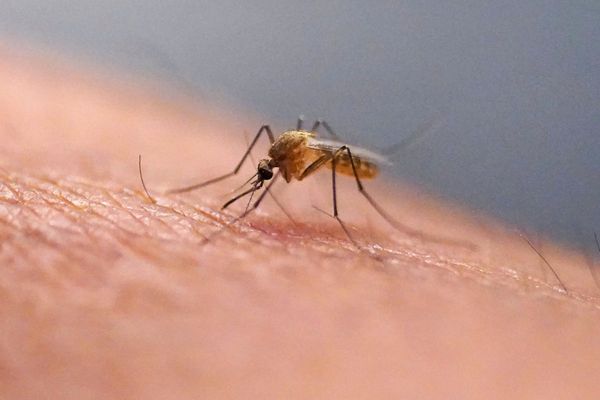
Despite coming from Wales, I dropped Welsh for Latin at my comprehensive school, so I know what Artes Mundi means. But I am all at sea watching a video in Arabic that has Welsh subtitles. Or rather I should be, but I am actually not: I am absorbed. A youth is punting a boat through the reeds in a sunbaked marshy estuary. As he speaks, the subtitles describe him as “bachgen” and I do know what that means: “boy”. It takes me back to when I was a bachgen.
Artes Mundi plunges you into a polyglot assembly of artists from all over the world dealing with problems and projects apparently remote from local Welsh concerns. The results are curious and wonderful: a Kurdish church in ruins, a beach in Bougainville, Lebanese portraits – and languages as diverse as the settings. Then again, are the world’s concerns really so remote from Welsh port cities and seaside towns? “This land is a poem of river healing,” says a poster-style artwork by Carolina Caycedo plastered across the front of Chapter Arts in Cardiff. The words are printed over a maplike painting of a landscape of green hills and blue water. This flowing land could be in Mexico or Brazil or Wales itself.

This exhibition and art prize held in Wales dramatically refuses to be Welsh – or to respect any national boundaries. After all, life doesn’t. The artists in this sprawling show come from everywhere, as we all do. Caycedo was born in London to Colombian parents, lives in Los Angeles and makes art about central and South America. Rushdi Anwar, showing at the National Museum, comes from Kurdistan and “lives and works between Thailand and Australia”. His art collects fragments of broken worlds. Unrecognisable shards in showers of red dust are held in glass cases while voices of US presidents talking about the Middle East boom from a jet-black gramophone.
In Mounira Al Solh’s neighbouring display, the faces of young women gaze from a series of portraits with the fabulous title: I strongly believe in our right to be frivolous. They all assert their right to individuality and autonomy with calm determination, most of them without hijab. Al Solh, who grew up in Beirut, makes art about victims and survivors. Her green tent screened off by blue hangings is a place of peace and healing, it seems, but with stories of suffering and the wounded on its embroidered surfaces.
So this is technically a prize, like the Turner, but just as the Tate’s annual award for contemporary art has gradually rejected the idea of competition and become more like a heavily curated group show, Artes Mundi does not really foster rivalry. These artists are all obviously saying interesting things from different points of view, with varying yet complementary stories to tell from a world that’s so full and connected. There’s another reason I can’t possibly pick a winner. As if to outdo the Turner, which now moves around UK locations, Artes Mundi 10 is spread out the length and breadth of Wales, making it impossible to see everything unless you took a week off and travelled from Swansea to Llandudno. Could this be a deliberate attempt to make it critic proof?
Perhaps it’s actually a piece of internal Welsh cultural politics to diffuse the hegemony of Cardiff. Coming from north Wales I was brought up to resent the cultural and political dominance of the south, but nowadays I can walk down a Cardiff street without feeling too paranoid. In fact, there doesn’t really seem any reason not to have all the artists exhibit in the National Museum. And this appears to be what people want. An impressive audience was exploring the installations at this grand classical building, whereas almost nobody was checking out the artists at Chapter, only a 20-minute walk away.

I was worried it was all a bit aimless until I watched Alia Farid’s film of the bachgen in the marsh in southern Iraq. Welsh subtitled screenings are in fact alternated with English ones: presumably having bilingual subtitles simultaneously would clog Farid’s ravishing images of one of the oldest inhabited regions on Earth. She interviews a boy in a reed shelter and uses digital effects to make garbage magically float around an ancient ziggurat.
I could have waited for the English subtitles but I got hooked on the magical, mysterious mixture of Arabic and Welsh. And this, surely, is the value of Artes Mundi. It puts you in a truly global interzone, where languages babble simultaneously and identities are fluid. That is the world we live in yet often pretend not to, building false barriers of nationhood and ethnicity in a world that in reality is molten and ever-mixing.
The Tower of Babel, whose destruction led to the world being filled with many languages, was perhaps a Mesopotamian ziggurat, like the one in Farid’s film. Here it is, that immemorial ruin of human collective effort broken by god, now seen at sunset by Farid’s steady camera as bottles float around it. Artes Mundi is a passport to the babble of the world.







